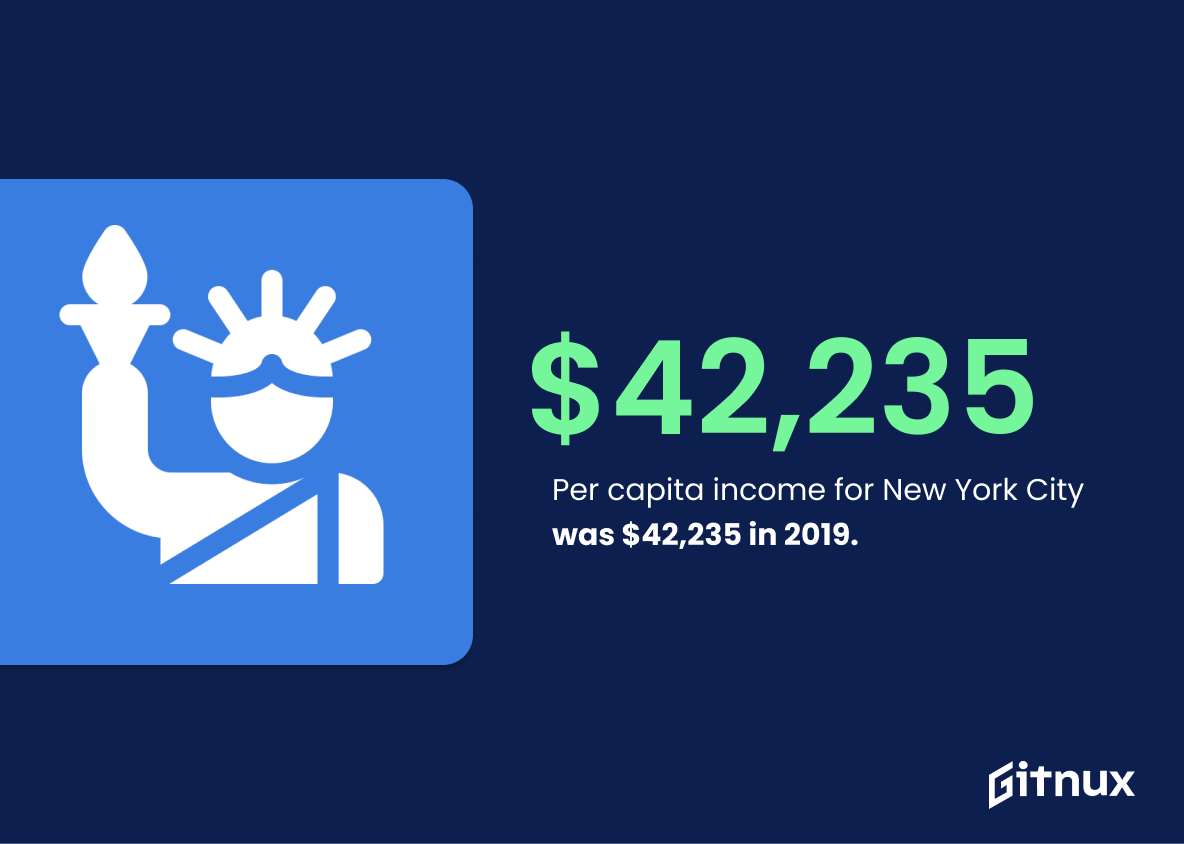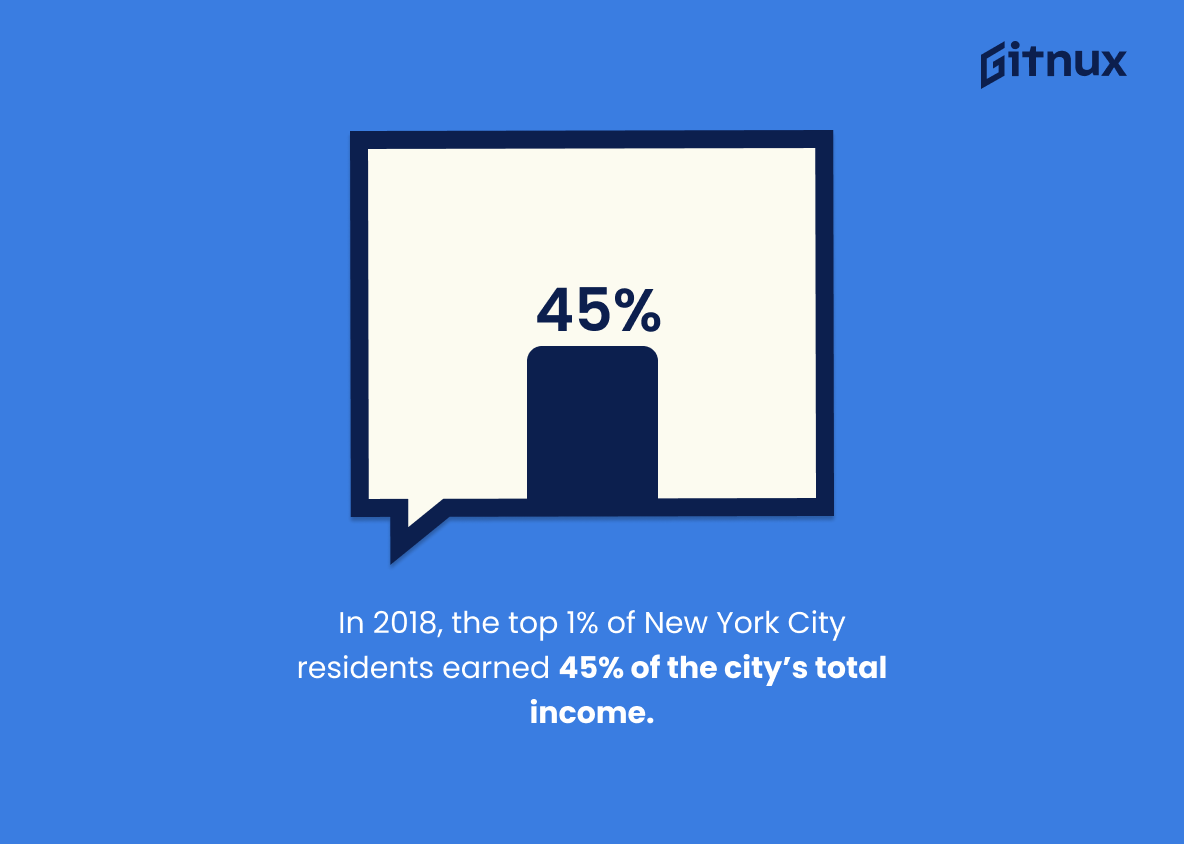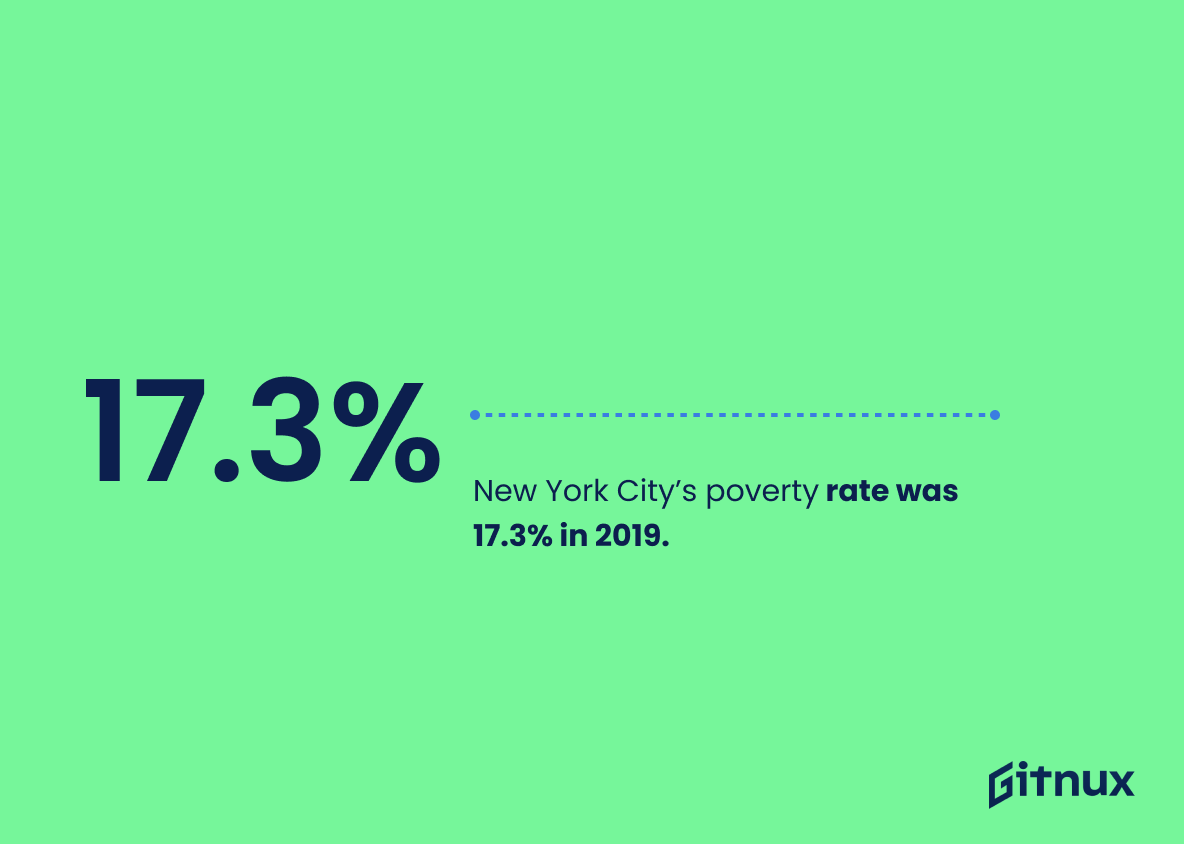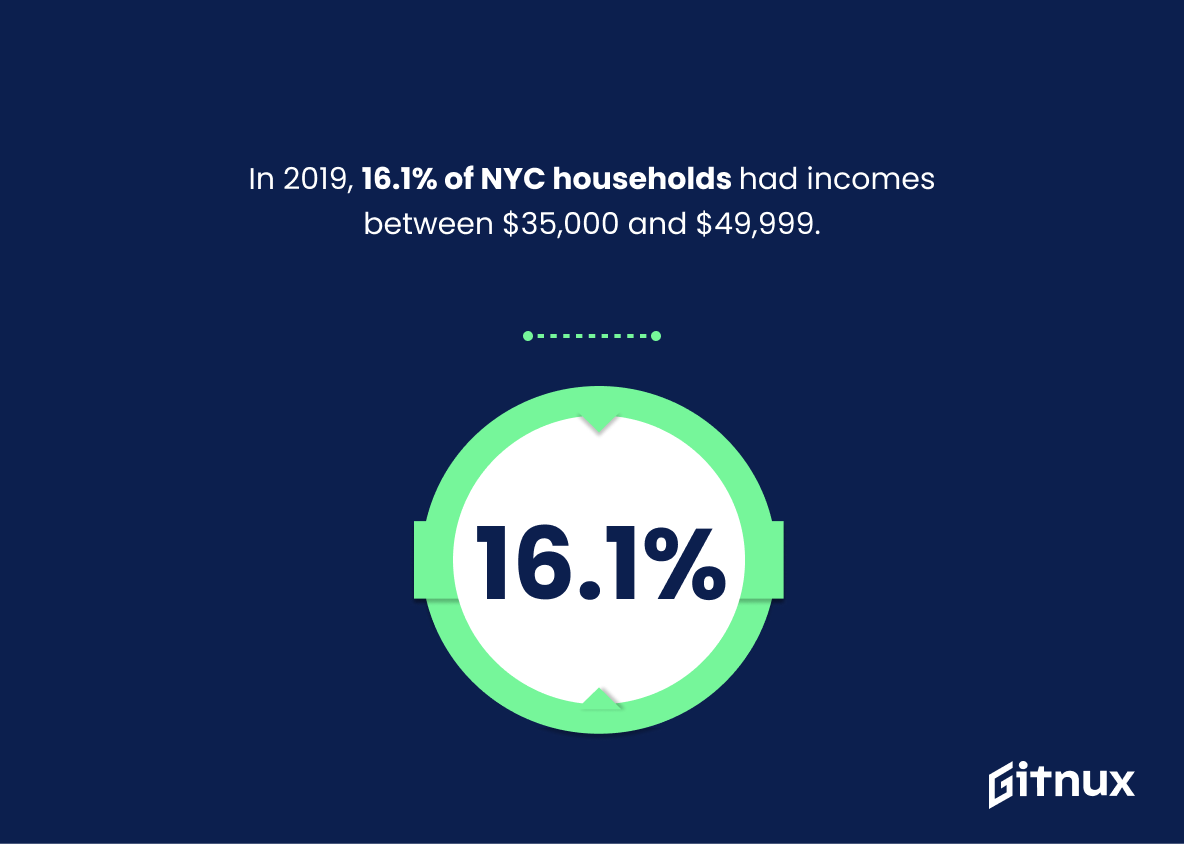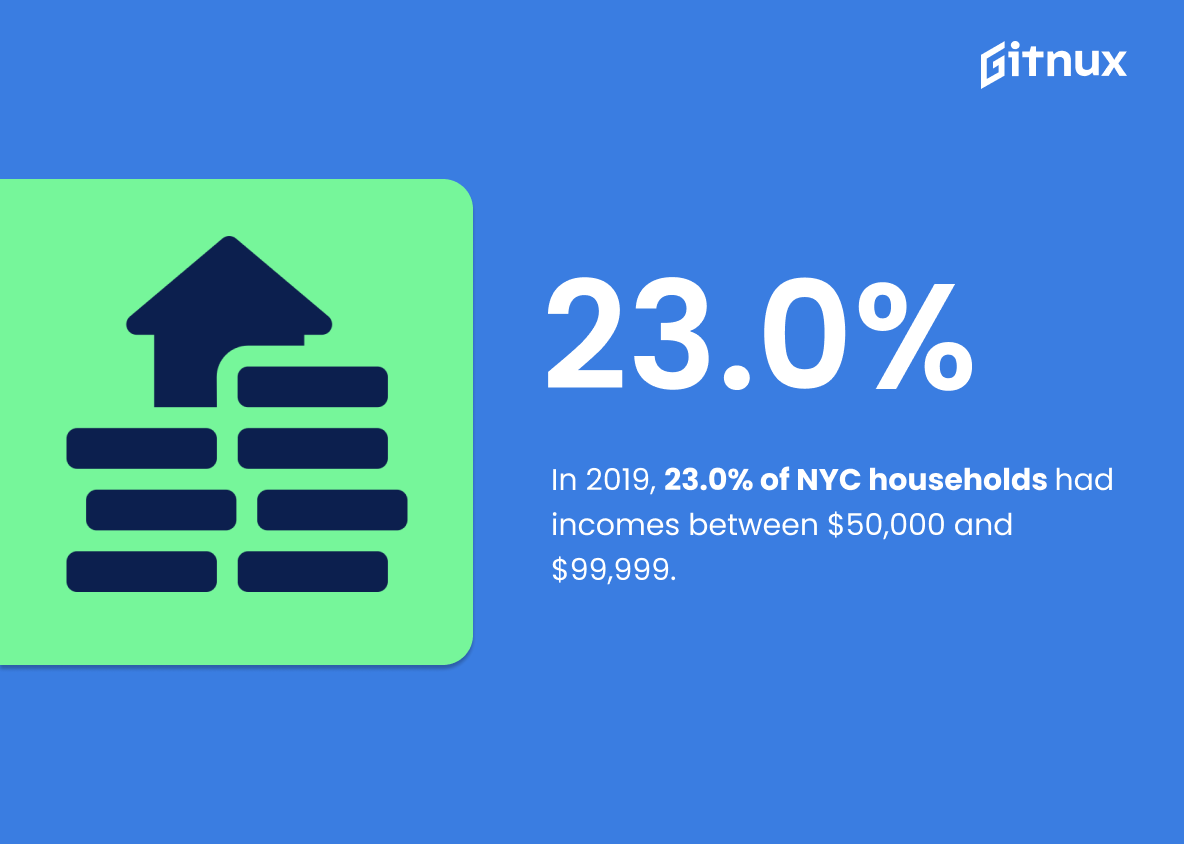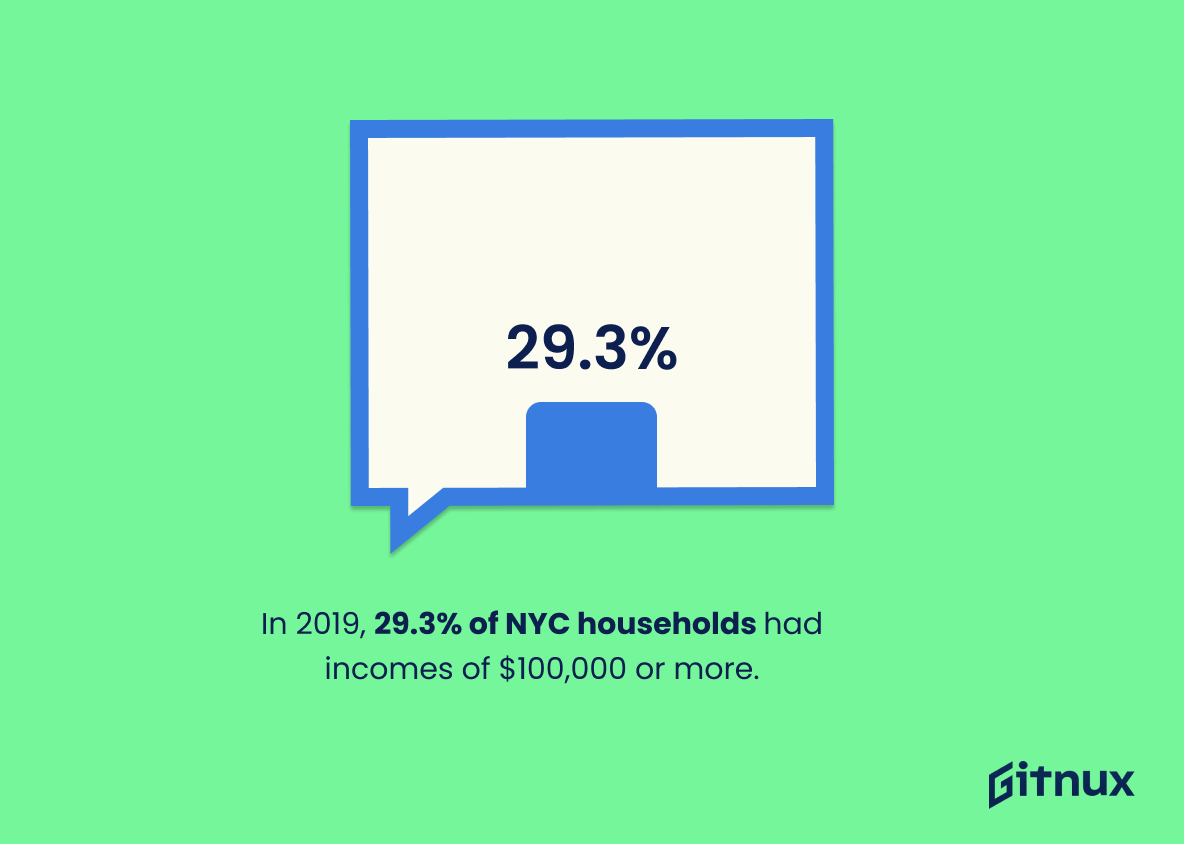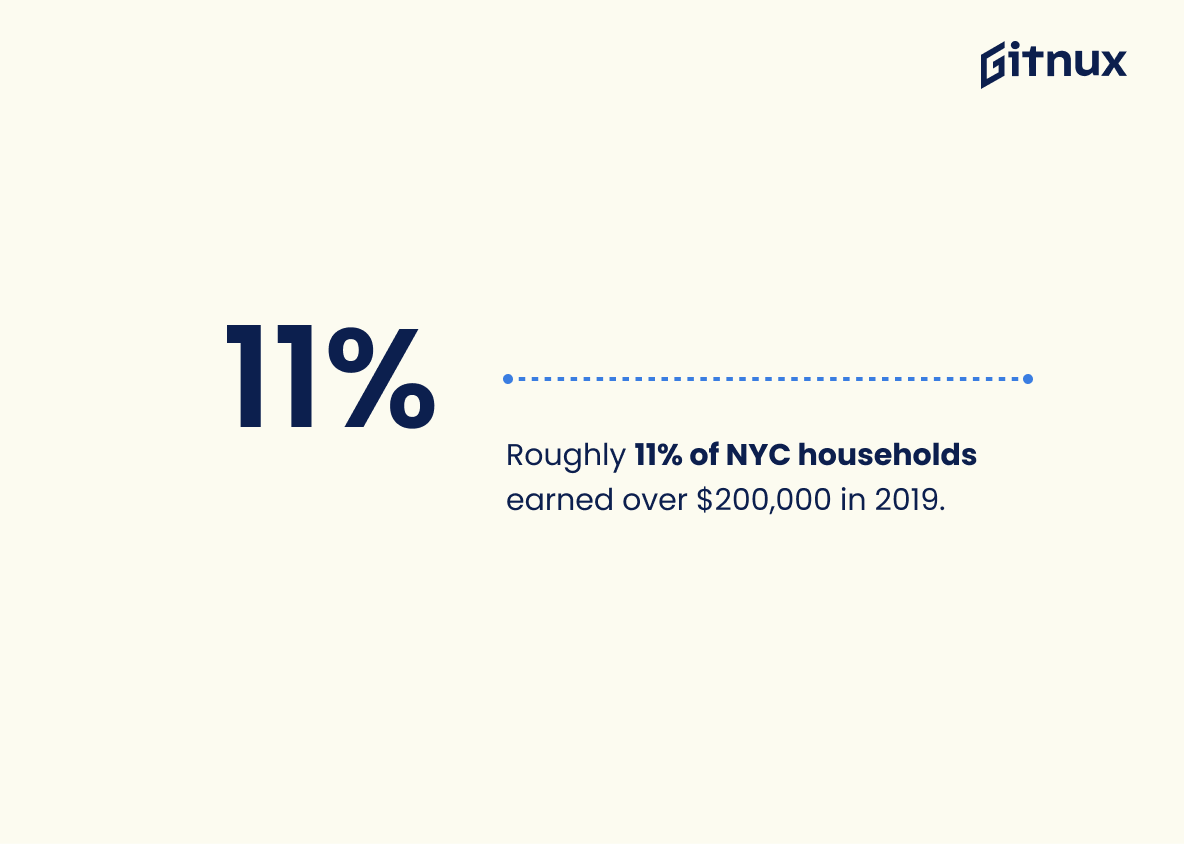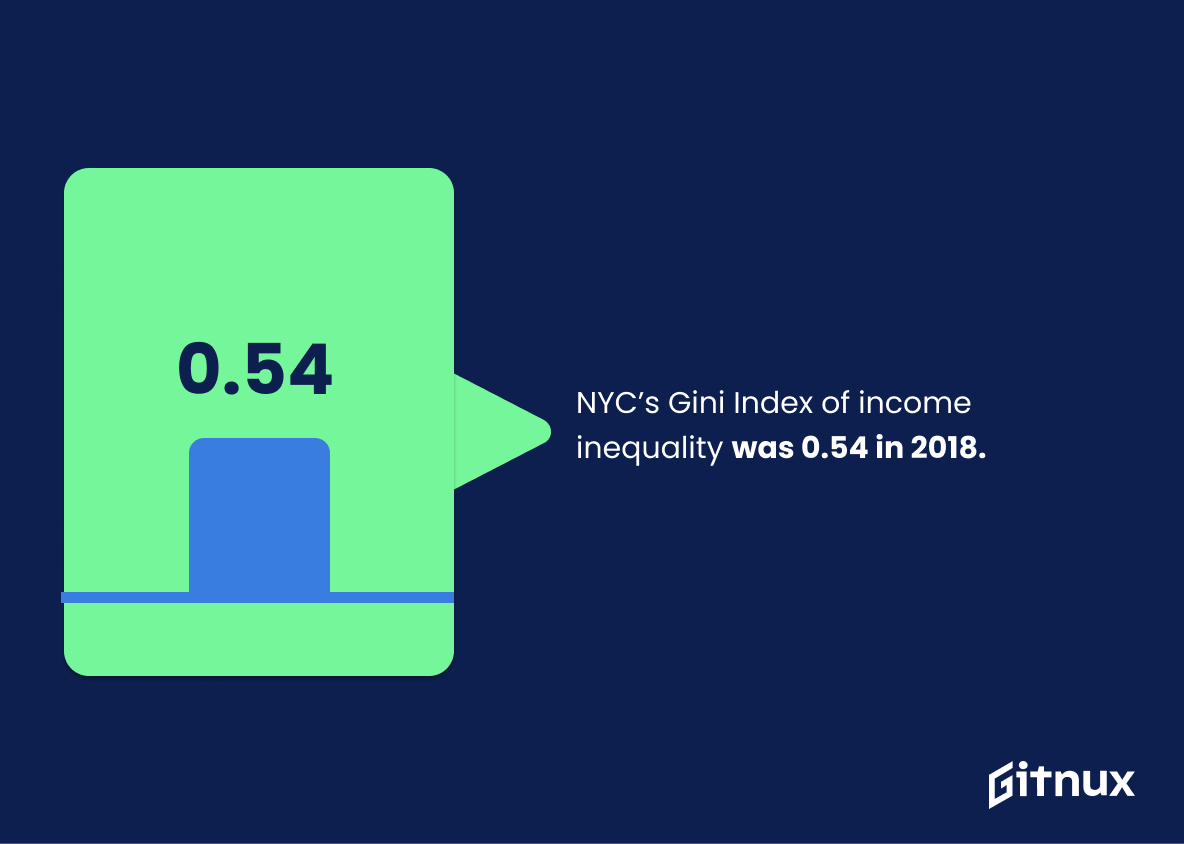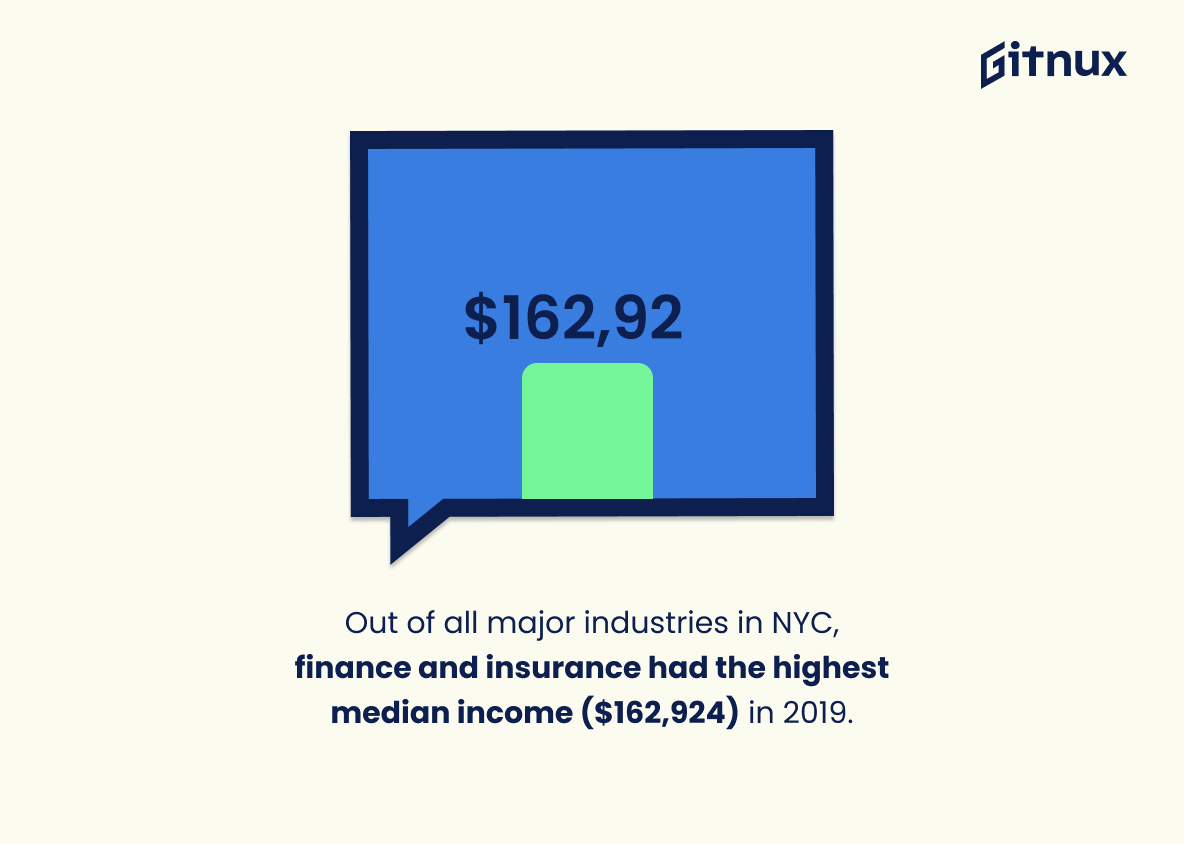New York City thrives with vibrancy and diversity. However, high incomes exist alongside striking wealth disparities. In 2019, the city’s median household income was $68,259. The average personal income among large US counties stood at $174,717, while the median family income reached $77,029. The per capita income was pegged at $42,235, and the top 1% accounted for 45% of the city’s total earnings.
The poverty rate hovered at 17.3%. Black households reported a median salary of $52,746, in contrast to white households that had an average wage of $93,782. Asian households earned around $65,295 annually, and Hispanic families recorded yearly salaries of $49,454. A significant 31.6% of NYC residents lived with incomes below $35,000. Meanwhile, 16.1% had earnings between $35,000 and $49,999, 23.0% ranged from $50,000 to $99,999, and 29.3% earned $100,000 or more. Notably, 11% of the population made over $200,000 in 2019.
Harlem’s data from 2018 depicted a concerning picture, with a Gini Index showing a 33.2% poverty rate. In this neighborhood, 25.6% of families led by single women were living below the poverty line. Additionally, those working in the finance and insurance sector enjoyed the city’s highest average salaries, earning $162,924 annually.
Let’s take a closer look at the most important statistics about New York City’s income disparities.
New York City Income Statistics Overview
Per capita income for New York City was $42,235 in 2019.
This statistic is a telling indication of the financial health of New York City. It provides a snapshot of the average income of its citizens, and can be used to compare the city’s economic standing with other cities. It is an important piece of information for anyone looking to understand the economic landscape of New York City.
In 2018, the top 1% of New York City residents earned 45% of the city’s total income.
This statistic is a stark reminder of the immense wealth gap that exists in New York City. It highlights the fact that the top 1% of earners are taking home a disproportionate amount of the city’s total income, leaving the rest of the population with a much smaller share. This statistic is a powerful illustration of the inequality that exists in the city and should be taken into account when discussing New York City income statistics.
New York City’s poverty rate was 17.3% in 2019.
This statistic is a telling indication of the economic disparity in New York City. It highlights the fact that a significant portion of the population is living in poverty, and that this is an issue that needs to be addressed. It is an important statistic to consider when discussing New York City’s income statistics, as it provides a glimpse into the financial struggles of many of its citizens.
In 2019, 31.6% of NYC households had incomes below $35,000.
This statistic is a stark reminder of the economic disparities that exist in New York City. It highlights the fact that a significant portion of the population is struggling to make ends meet, and that the city’s wealth is not evenly distributed. It is a reminder that there is still much work to be done to ensure that all New Yorkers have access to the resources they need to thrive.
In 2019, 16.1% of NYC households had incomes between $35,000 and $49,999.
This statistic is a telling indication of the financial situation of many New Yorkers. It reveals that a significant portion of households in the city are living on incomes that are just above the poverty line, but still far from being able to afford the high cost of living in the city. This statistic is an important reminder of the need for policies that can help to improve the financial security of these households.
In 2019, 23.0% of NYC households had incomes between $50,000 and $99,999.
This statistic is a telling indication of the financial state of New York City households. It reveals that a significant portion of the population is living on an income that falls within the middle-class range. This is important to consider when discussing the overall economic landscape of the city, as it provides insight into the financial stability of its citizens.
In 2019, 29.3% of NYC households had incomes of $100,000 or more.
This statistic is a telling indication of the financial health of New York City. It shows that nearly a third of households in the city are earning six-figure incomes, which is a strong sign of economic prosperity. This statistic is important to consider when discussing the overall income landscape of New York City.
Roughly 11% of NYC households earned over $200,000 in 2019.
This statistic is a telling indication of the economic disparity in New York City. It shows that a small portion of households are earning a disproportionately large amount of income, while the majority of households are earning far less. This statistic is an important reminder of the need for policies that promote economic equality in the city.
NYC’s Gini Index of income inequality was 0.54 in 2018.
The Gini Index of income inequality in NYC in 2018 paints a vivid picture of the stark economic disparities that exist in the city. It serves as a stark reminder that, despite the city’s wealth and prosperity, there are still many who are struggling to make ends meet. This statistic is a powerful indicator of the need for greater economic equality in New York City, and should be taken into account when discussing the city’s income statistics.
Harlem in Manhattan had the highest poverty rate (33.2%) among NYC neighborhoods in 2019.
This statistic is a stark reminder of the inequality that exists in New York City. It highlights the fact that, despite the city’s wealth and prosperity, there are still neighborhoods that are struggling with poverty. This statistic serves as a call to action for policy makers and community leaders to take steps to reduce poverty in Harlem and other NYC neighborhoods.
In 2019, 29.4% of New Yorkers aged 25 and older without a high school diploma lived in poverty.
This statistic is a stark reminder of the reality that many New Yorkers face: a lack of educational attainment can lead to a greater risk of poverty. It highlights the need for more resources to be allocated to helping those without a high school diploma gain access to the education and skills they need to succeed in the job market. It also serves as a reminder of the importance of investing in education and job training programs to help reduce poverty in New York City.
Out of all major industries in NYC, finance and insurance had the highest median income ($162,924) in 2019.
This statistic is a telling indication of the financial power of the finance and insurance industries in New York City. It demonstrates that these industries are the most lucrative in the city, and that they are a major source of income for many New Yorkers. This information is important to consider when discussing the overall income of the city, as it provides insight into the economic health of the city and the industries that are driving its growth.
Conclusion
The data presented in this blog post paints a comprehensive picture of the income statistics for New York City. The median household income was $68,259 in 2019 and the average personal income among large US counties was highest at $174,717. Median family incomes were higher than median household incomes ($77,029 vs. $68,259) while per capita incomes were lower ($42,235). In 2018, the top 1% of NYC residents earned 45% of total citywide income and 17.3% lived below poverty level in 2019 – with black households having significantly lower median incomes compared to white or Asian households ($52,746 vs. 93 782 & 65 295 respectively).
Households earning less than 35 000 accounted for 31 6%, those between 35-49 999 16 1%, 50-99 999 23 0%, 100 000+ 29 3%. 11 % had an annual earnings over 200K while Harlem had 33 2% living under poverty line (29 4%) without high school diploma (25 6%). Finance & insurance industry boasted highest median salary at 162 924$. Overall Gini Index stood at 0 54 indicating significant inequality across different socio economic groups within NYC population
References
0. – https://www..nyc.gov
1. – https://www.furmancenter.org
2. – https://www.c2er.org
3. – https://www.bls.gov
4. – https://www.datausa.io
5. – https://www.census.gov
